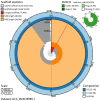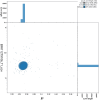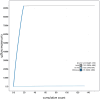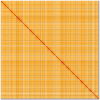The genome sequence of the cut surfclam, Spisula subtruncata (da Costa, 1778)
- PMID: 39015612
- PMCID: PMC11249531
- DOI: 10.12688/wellcomeopenres.22286.1
The genome sequence of the cut surfclam, Spisula subtruncata (da Costa, 1778)
Abstract
We present a genome assembly from a specimen of Spisula subtruncata (the cut surfclam; Mollusca; Bivalvia; Venerida; Mactridae). The genome sequence is 930.8 megabases in span. Most of the assembly is scaffolded into 19 chromosomal pseudomolecules. The mitochondrial genome has also been assembled and is 19.64 kilobases in length.
Keywords: Spisula subtruncata; Venerida; chromosomal; cut surfclam; genome sequence.
Copyright: © 2024 Adkins P et al.
Conflict of interest statement
No competing interests were disclosed.
Figures





References
-
- Bates A, Clayton-Lucey I, Howard C: Sanger Tree of Life HMW DNA fragmentation: diagenode Megaruptor ®3 for LI PacBio. protocols.io. 2023. 10.17504/protocols.io.81wgbxzq3lpk/v1 - DOI
Grants and funding
LinkOut - more resources
Full Text Sources

